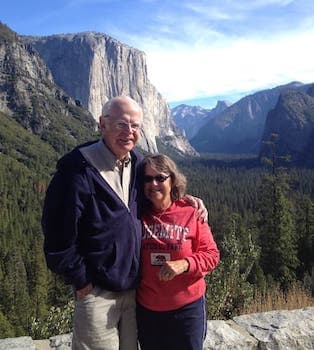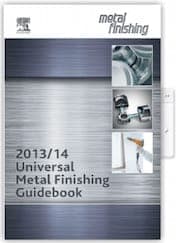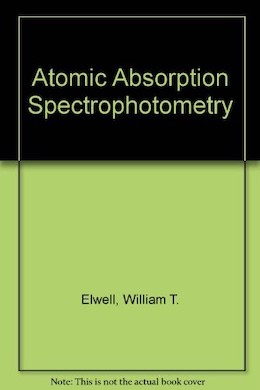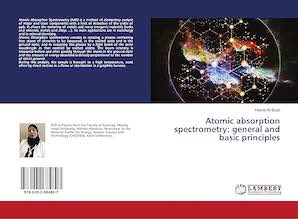
-----
Silver baths: strike and analysis of silver
Q. Hi Jason, I am using this analyzer with atomic absorption device ⇦ on eBay or Amazon [affil link] . However, there is a problem. How should the setting be? Also how to calculate. Because silver is marked in the atomized sample. However, there is AgCN in the baths. How to do this calculation.
Onur Furkanstudent - Turkey
January 28, 2022
A. Hi Onur. Jason's posting is from 17 years ago; I would be surprised if he replies. However, did you try his advice that you check Perkin-Elmer for the calculation? Unfortunately I don't quite understand your question, but I see what looks to me like great info about this at www1.lasalle.edu/~prushan/Intrumental%20Analysis_files/AA-Perkin%20Elmer%20guide%20to%20all!.pdf
Luck & Regards,

Ted Mooney, P.E. RET
Striving to live Aloha
finishing.com - Pine Beach, New Jersey
Ted is available for instant help
or longer-term assistance.
(affil links)

free pdf is currently available from academia.edu
Q. Thanks for the info Ted Mooney. We have silver baths. It contains certain proportions of KCN and AgCN compounds. I want to find the amount of AgCN with atomic absorption device. The device gives results as silver metal. How can I calculate the amount of AgCN.
Onur Furkan [returning]student - Turkey
February 1, 2022
A. Hi again, Onur. When we aren't told why you want to do something it is difficult to understand and answer properly, especially when we are obviously having some language difficulties :-(
But if your question is, "What is the percentage by weight of silver in silver cyanide", the answer can be found in the 2012-2013 Metal Finishing Guidebook, p. 863: AgCN is 80.5% silver. I.e., the weight of the silver cyanide is 1.242X the weight of silver.
Luck & Regards,

Ted Mooney, P.E. RET
Striving to live Aloha
finishing.com - Pine Beach, New Jersey
Ted is available for instant help
or longer-term assistance.
![]() Thank you. I will try to solve this problem. If there is a problem, can I send you an e-mail?
Thank you. I will try to solve this problem. If there is a problem, can I send you an e-mail?
student - Turkey
February 2, 2022
A. Hi again. If you have continuing questions post them. This is a public forum not a consulting service, and there are a thousand readers for every poster. It isn't fair to them to have them read the early entries on a discussion and then cut them out of the conversation further along :-)
Luck & Regards,

Ted Mooney, P.E. RET
Striving to live Aloha
finishing.com - Pine Beach, New Jersey
Ted is available for instant help
or longer-term assistance.
|
|
Q. With what solutions should I adjust the head (const.?) of the atomic absorber? Forward, backward and up-down settings are available. How should I do. For silver analysis, your device is in its library; sensitivity check. (mg/L) It says 1.1. It says Linear to (mg/mL) 1. Onur Furkan [returning]student - Turkey February 9, 2022 A. Howdy Onur Furkan, Technician - Minnesota |
![]() Thank you Jason. I'm trying.
Thank you Jason. I'm trying.
student - Turkey
Q. Sara, do you know about currentless processes?
Onur Furkan [returning]student - Turkey
February 17, 2022
![]() Hi again Furkan. Sara's posting was from 17 years ago as well, so I don't know if she will be responsive to questions -- but quizzing her on her qualifications doesn't seem like a promising way to try to re-engage her :-)
Hi again Furkan. Sara's posting was from 17 years ago as well, so I don't know if she will be responsive to questions -- but quizzing her on her qualifications doesn't seem like a promising way to try to re-engage her :-)
Sorry about your difficulties with this, but please either get someone at your school or company to help you "hands-on", or ask a specific question. In the context of atomic absorption analysis of silver, I don't know what the term 'currentless processes' even means. Apologies!
Thanks & Regards,

Ted Mooney, P.E. RET
Striving to live Aloha
finishing.com - Pine Beach, New Jersey
Ted is available for instant help
or longer-term assistance.
⇩ Related postings, oldest first ⇩
Q. Hi,
We electrodeposit silver on decorative Ni-coated pieces.
We work with a silver strike bath (we chose 6 g/l AgCN, 60 g/l KCN, no filtration, approx. 1.5 A/dm2 for 15 minutes), followed by the silver bath at the conditions our provider gave us.
* We want to check two things:
- Are we doing it right about the strike bath?
- Our analysis method (from the provider) to determine the g/l silver: adding acids, boil it and using "alumbre ferrico" (spanish term) to see a colour change via titration to a "melon" colour. This colour change seems difficult to determine. The sample to titrate has already a melon colour.
I'm looking for alternative methods for silver analysis (also via titration, we do not have other equipment here). I don't know if they exist, but if they do, please tell me.
Thanks!
- Querétaro, Mexico
2005
A. The way I do it is as follows:
5.0 ml plating bath is combined with about 20 ml water in a 500 ml Erlenmayer flask, and about 3 ml 30% hydrogen peroxide added. Next, WAIT. In 10 - 15 minutes, there will be a very obvious reaction in which most of the cyanide is destroyed, leaving a gray black precipitate of silver metal/hydroxide.
Now, IN A FUME HOOD, add about 15 ml sulfuric acid and about 10 ml nitric acid,(cyanide gas will be evolved) and heat. First you'll see brown fumes, then the characteristic white fume of refluxing sulfuric. Heat it at this point until a clear solution is obtained. There is sometimes a little solid matter that will not dissolve. Let it cool.
Then, lastly, carefully add about 150 ml water, and about 1 ml of 5% ferric ammonium sulphate solution. Titrate to an orange-red endpoint with 0.1N potassium thiocyanate
⇦ on
eBay
or
Amazon [affil link]
solution.
ml titrated x 0.288 = Silver in oz/gal (avoir)
Good luck!

Dave Wichern
Consultant - The Bronx, New York
2005
A. Why not use atomic absorption spectrophotometry? in a 100 ml volumetric flask, dilute your sample 10:100, then add 1 ml to each flask, marked a, b, c ... in flask b spike with 1 ml of 100 ppm silver reference, in flask b spike with 2 mls 100 ppm silver reference solution, run on AA with silver lamp and proper wavelength and slit; you will record the results of each flask (a, b, and c) I'm afraid I do not have the calculations with me offhand for the results, but they are available from perkin-elmer.

Jason A. Brown
Sanmina-sci, USA - Athens, Pennsylvania, USA
2005
A. Concentration of silver strike should be 1.5 g/k AgCN + 100 g/l KCN.
15 minutes is too long!

Sara Michaeli
Tel-Aviv-Yafo, Israel
2005
Q. Nowadays we lowered the current density to about 0.05 A/dm2 (in a barrel of 13 kg of little pieces, bath of 200 l).
Is 15 min then still too long?
- Querétaro, Mexico
Q. I have a problem analyzing silver from a silver cyanide bath. This bath is a 6 oz/gal bath and my readings are not constant. I dilute the sample 0.1 ml solution to 100 mls DI water and my ICP results vary from 45 ppm to 60 ppm. I am using a Varian 710 ICP. Anybody has another method or probably I am missing a step in my sample preparation?
sergio lopezelectroplating company - fullerton California, USA
December 23, 2017
Q, A, or Comment on THIS thread -or- Start a NEW Thread

